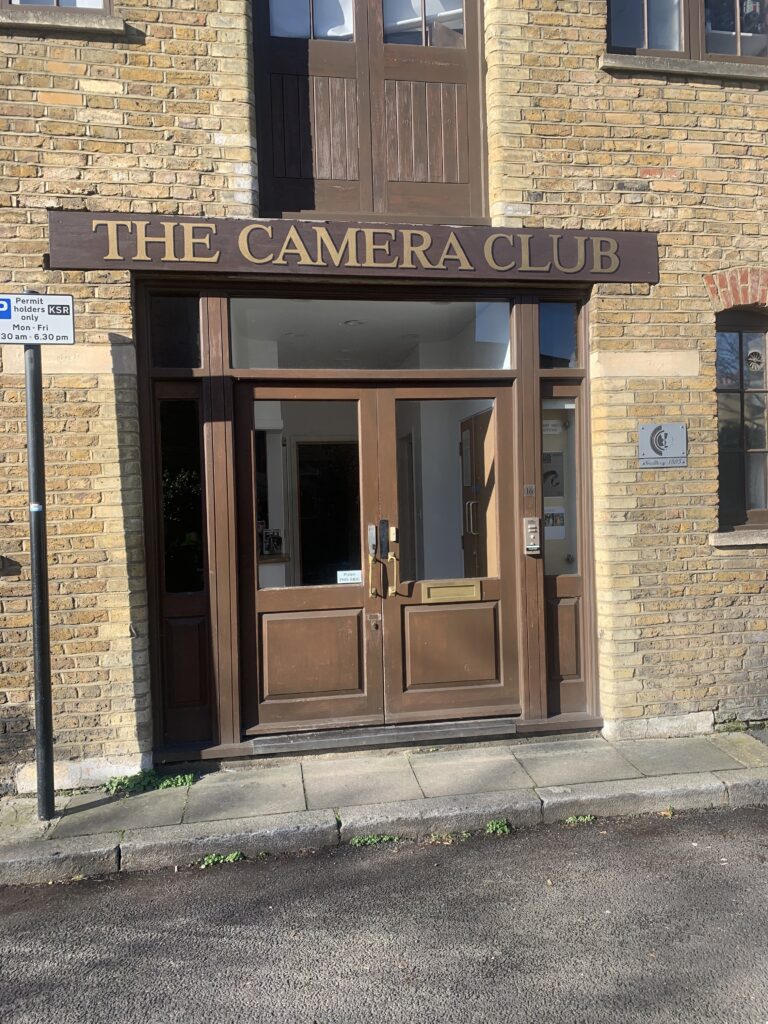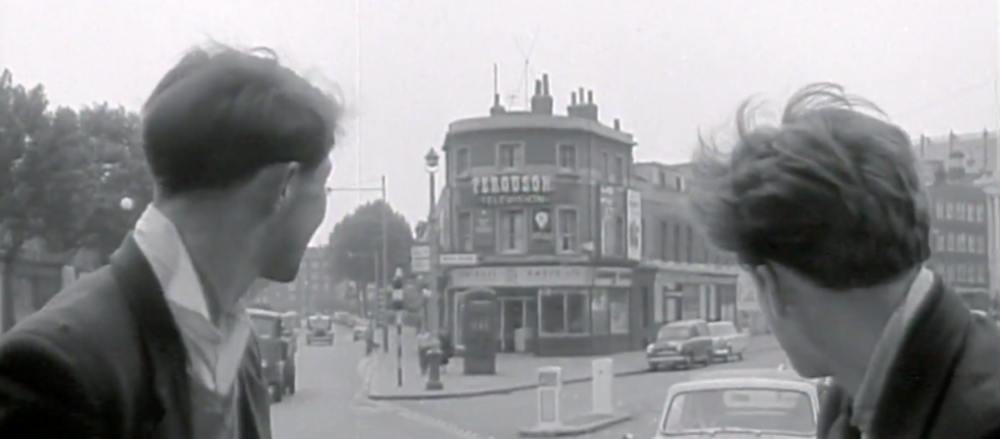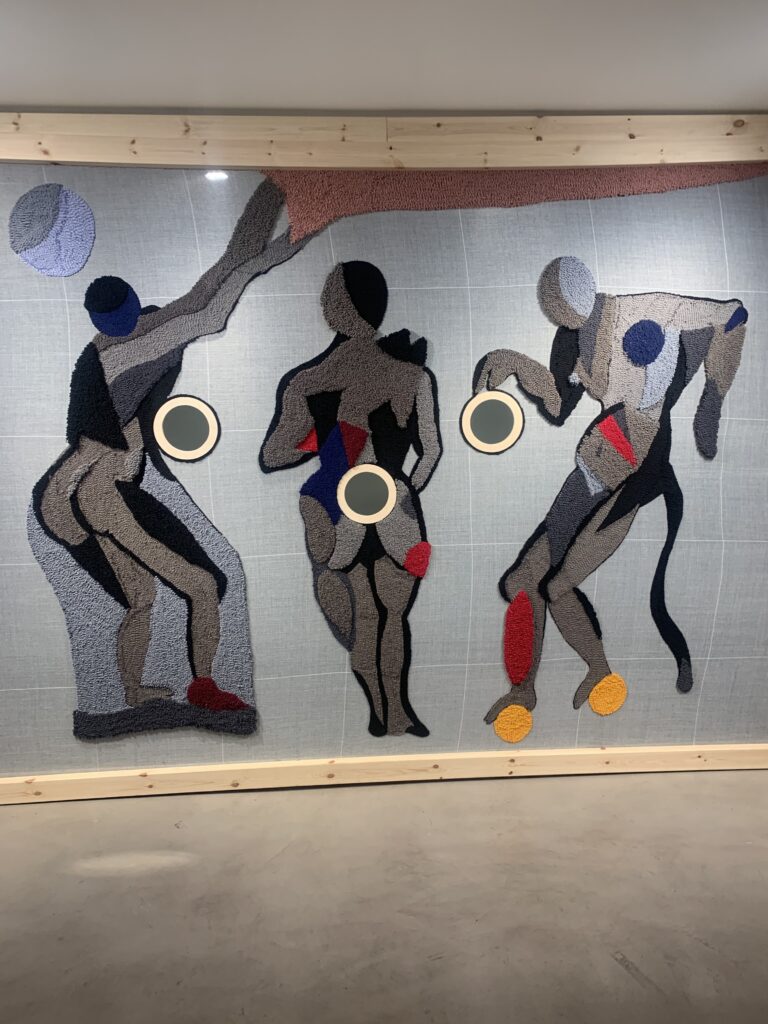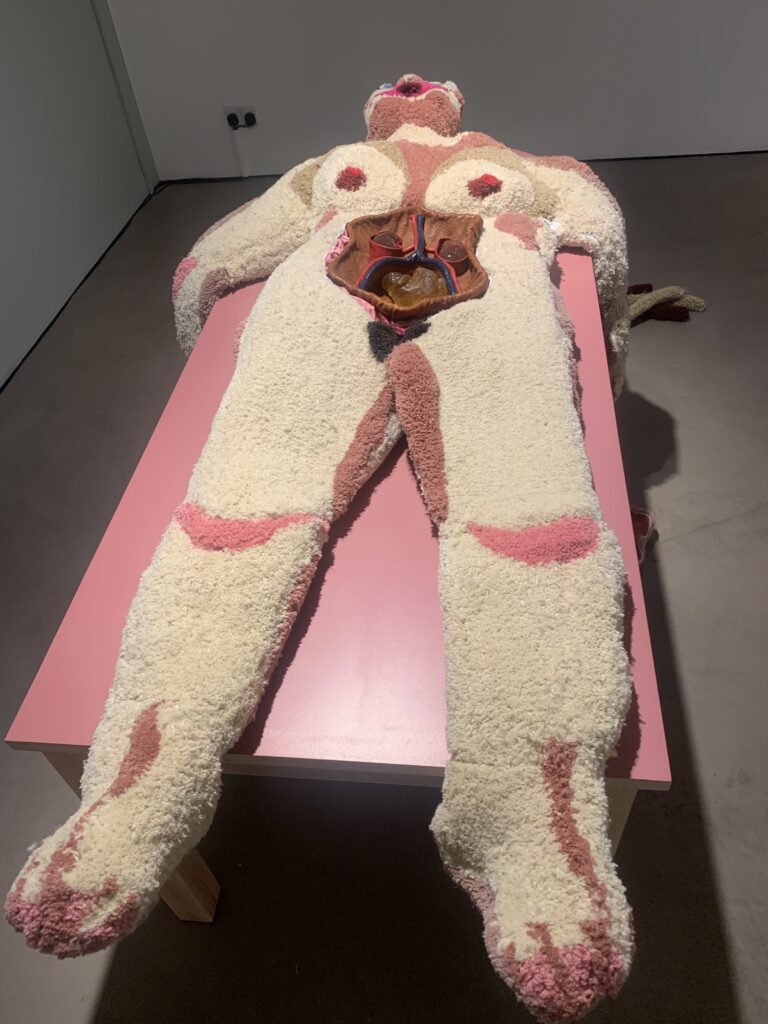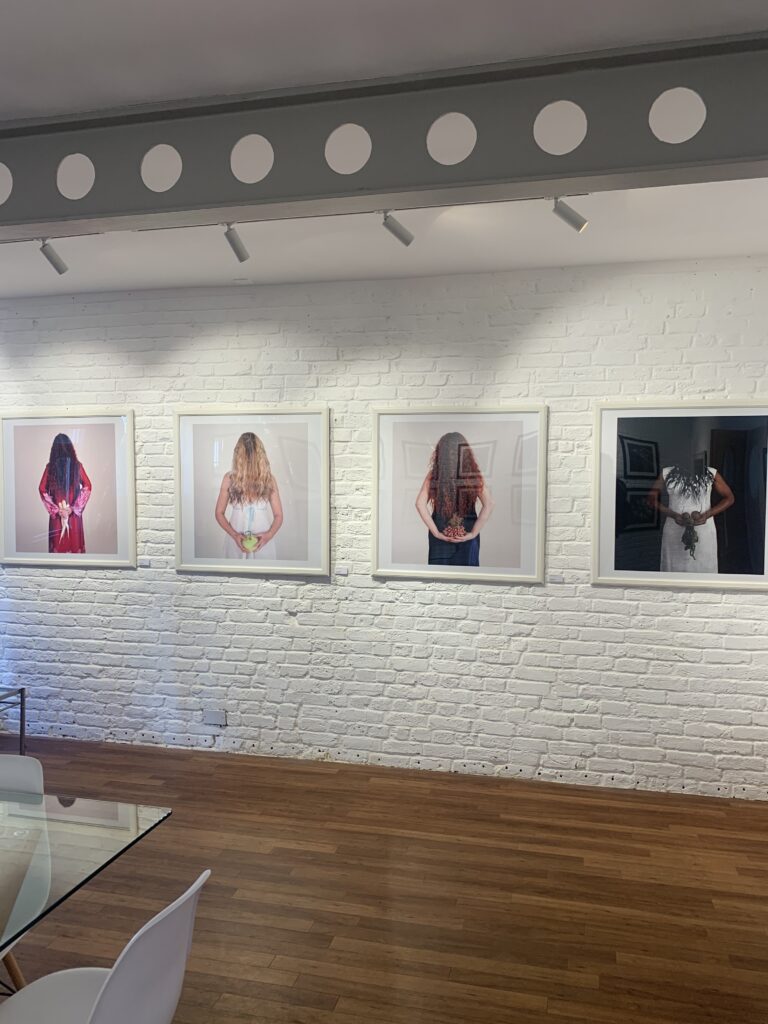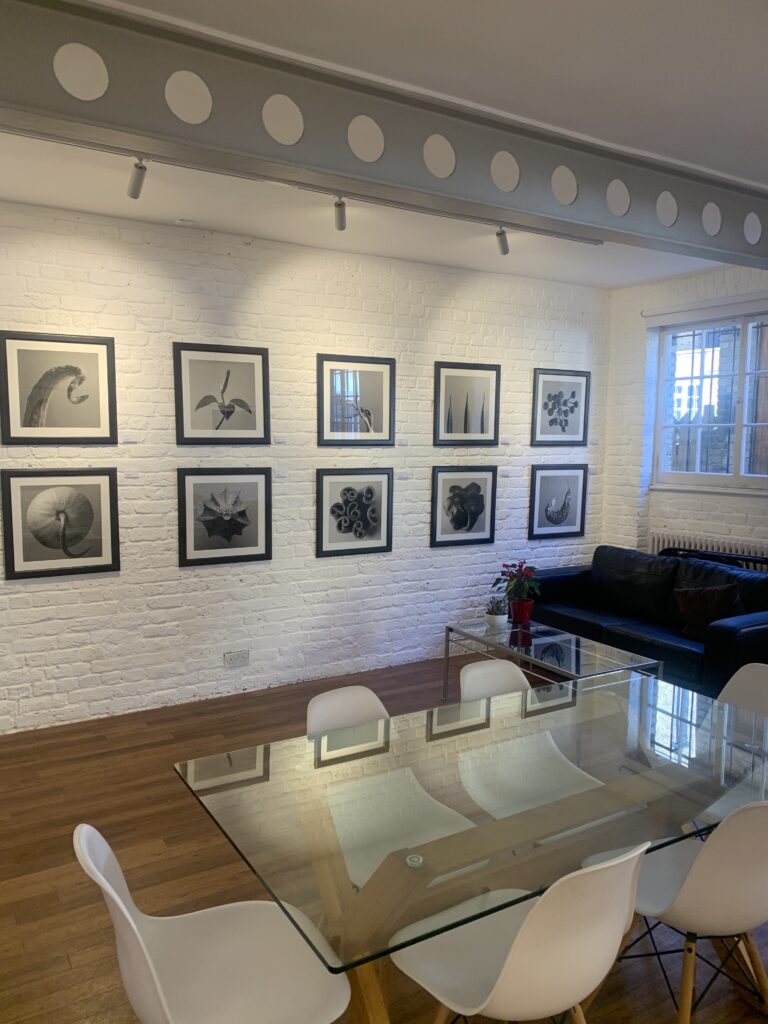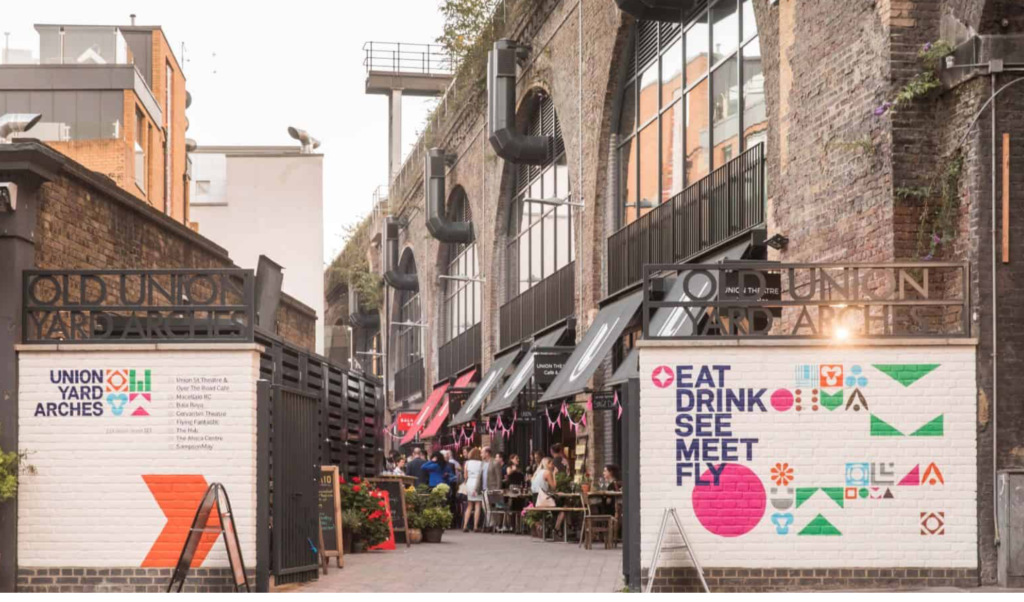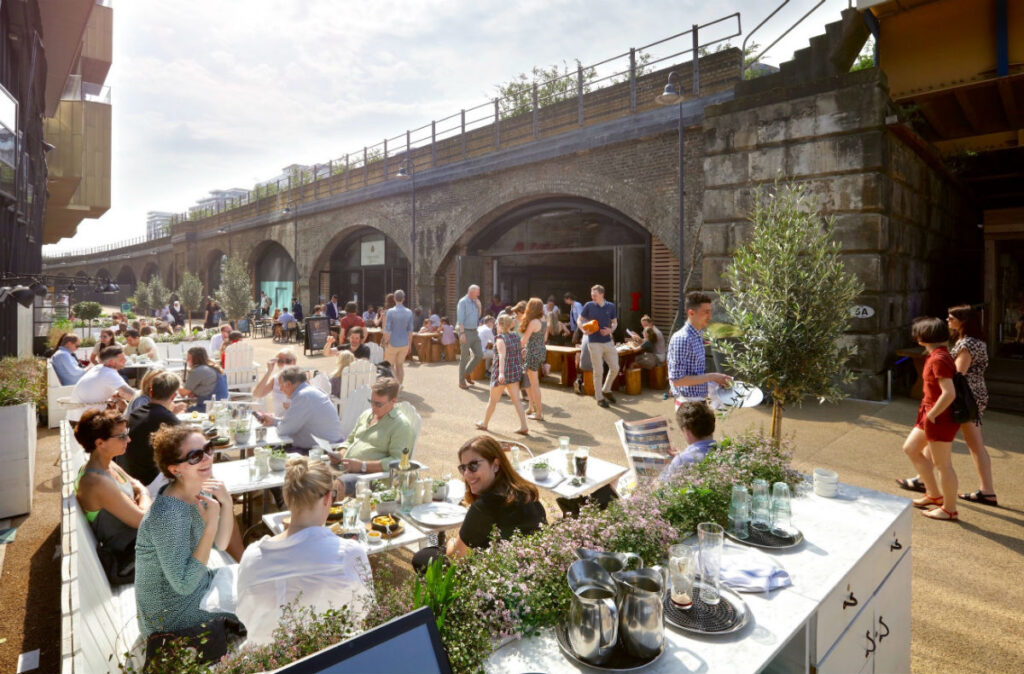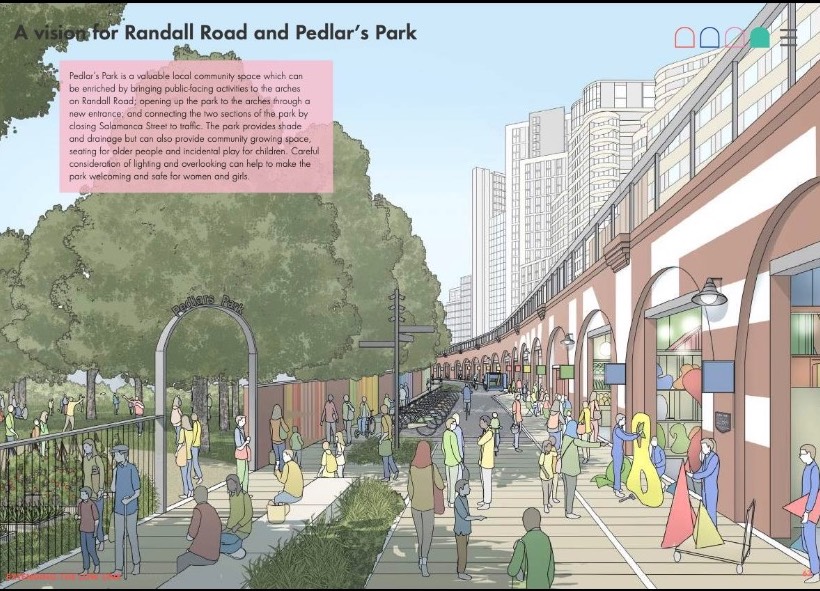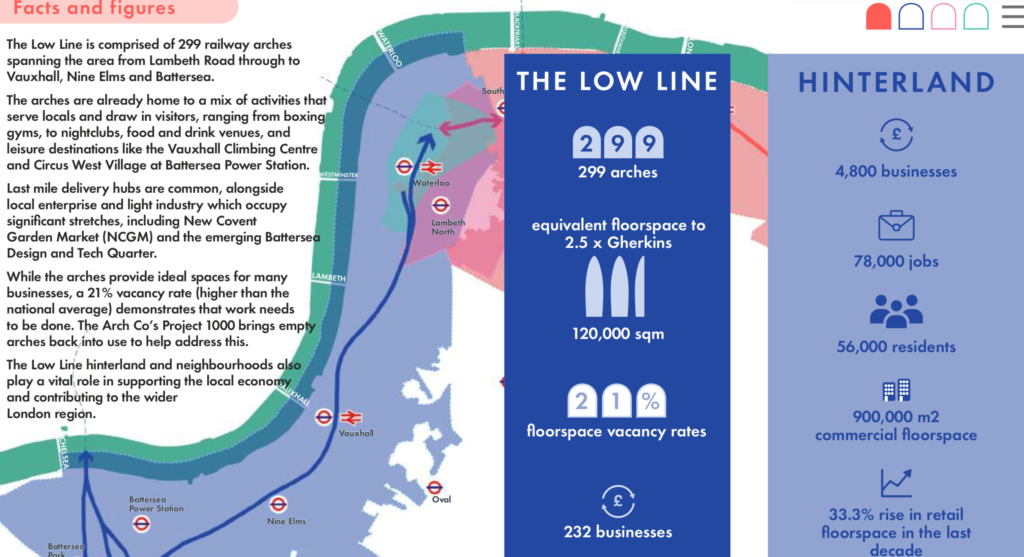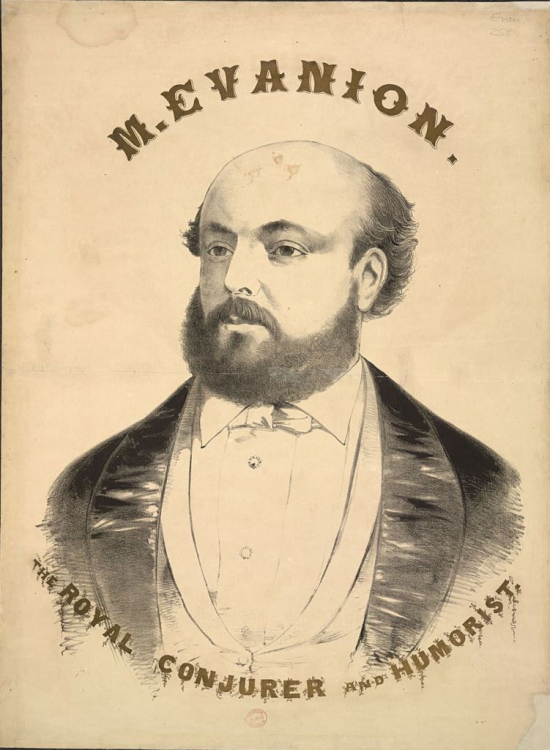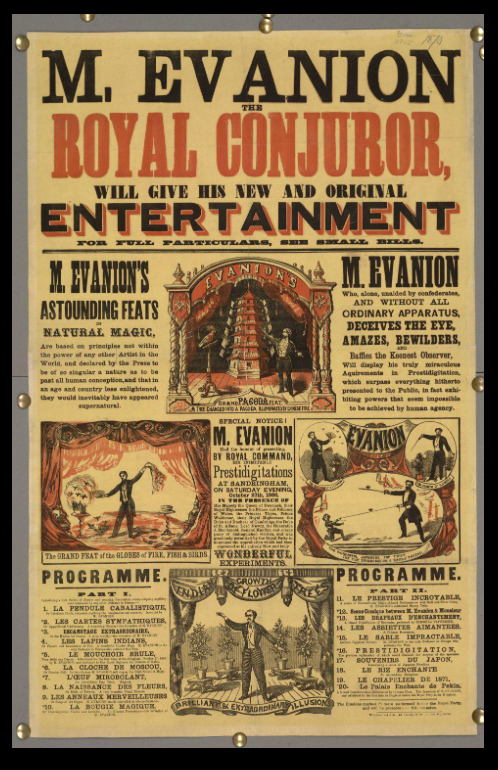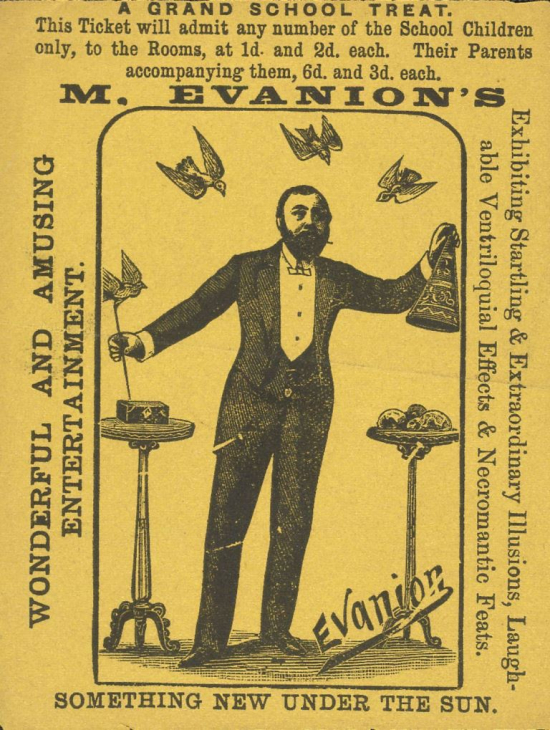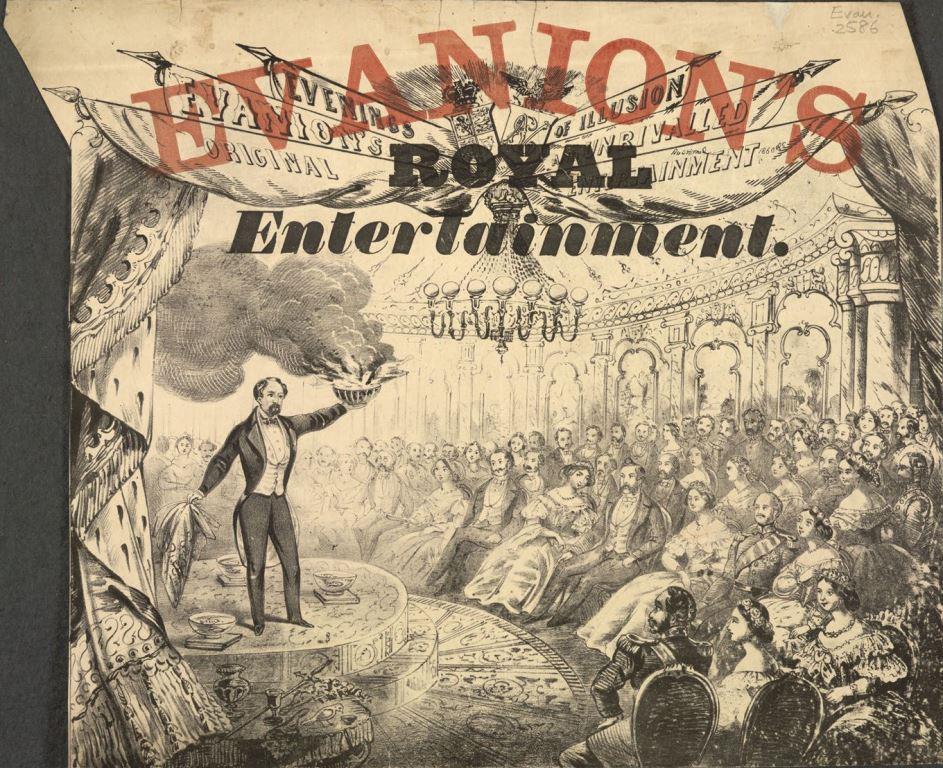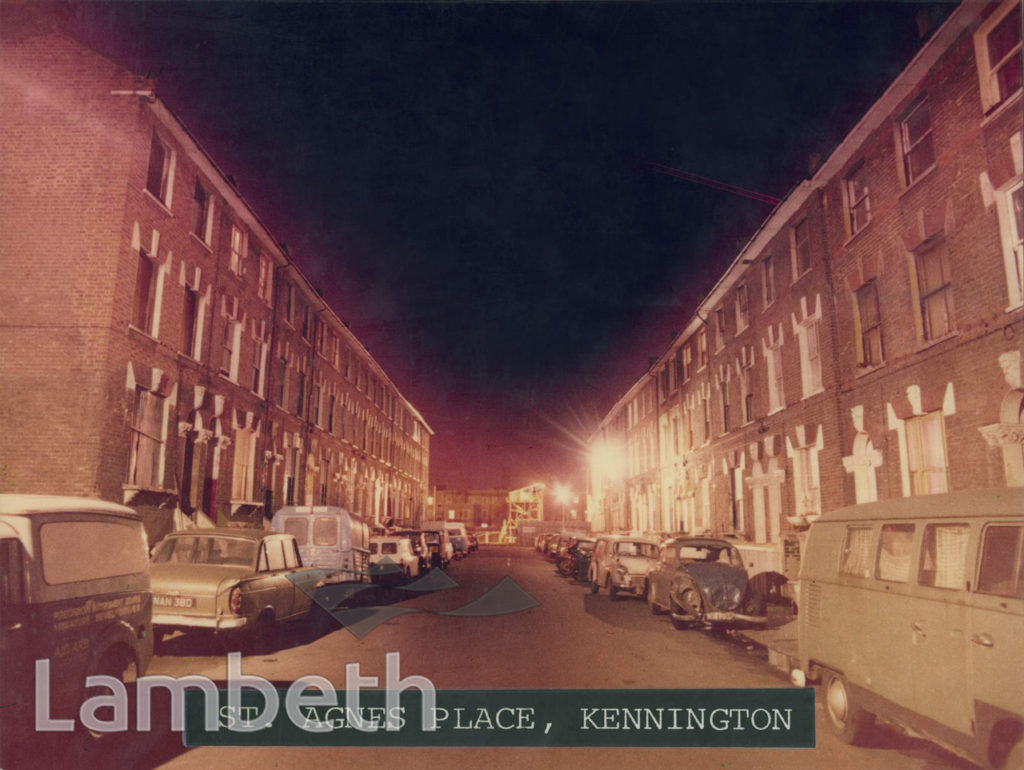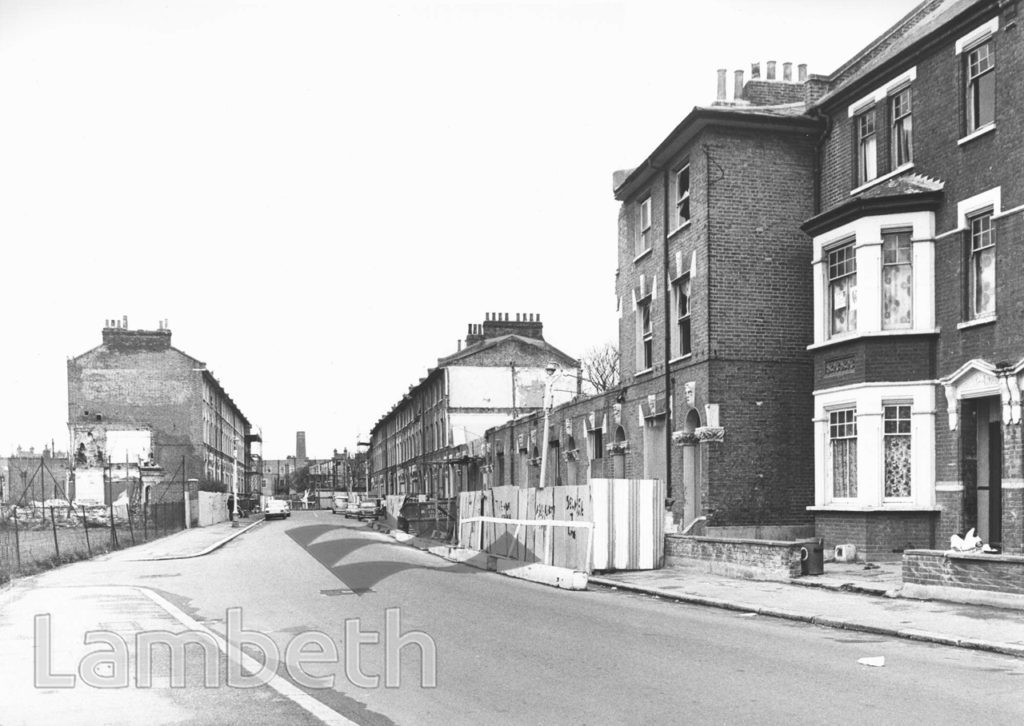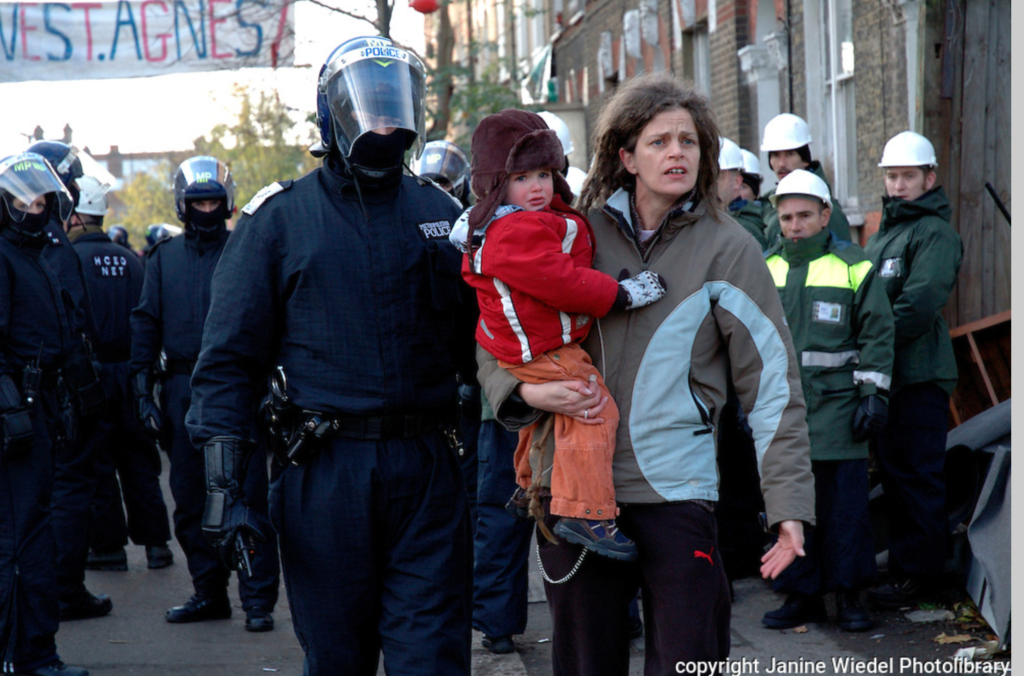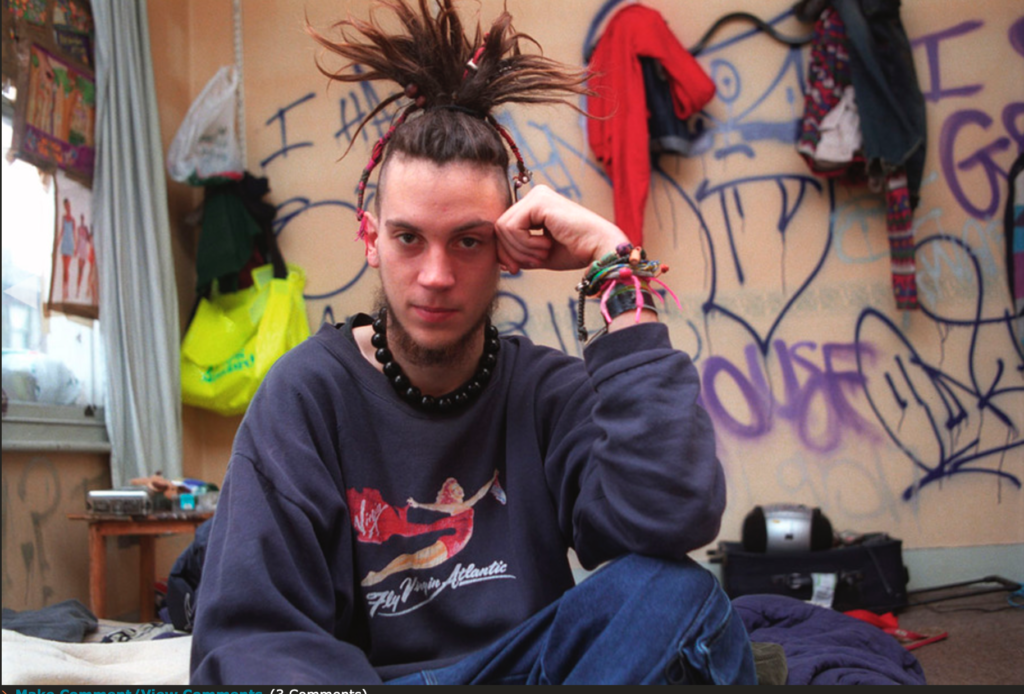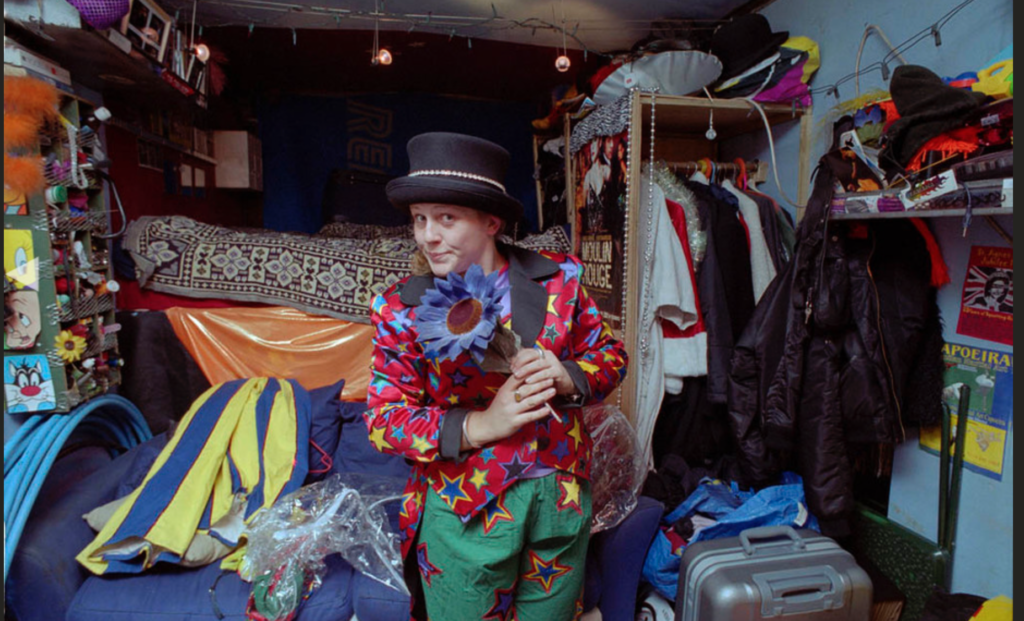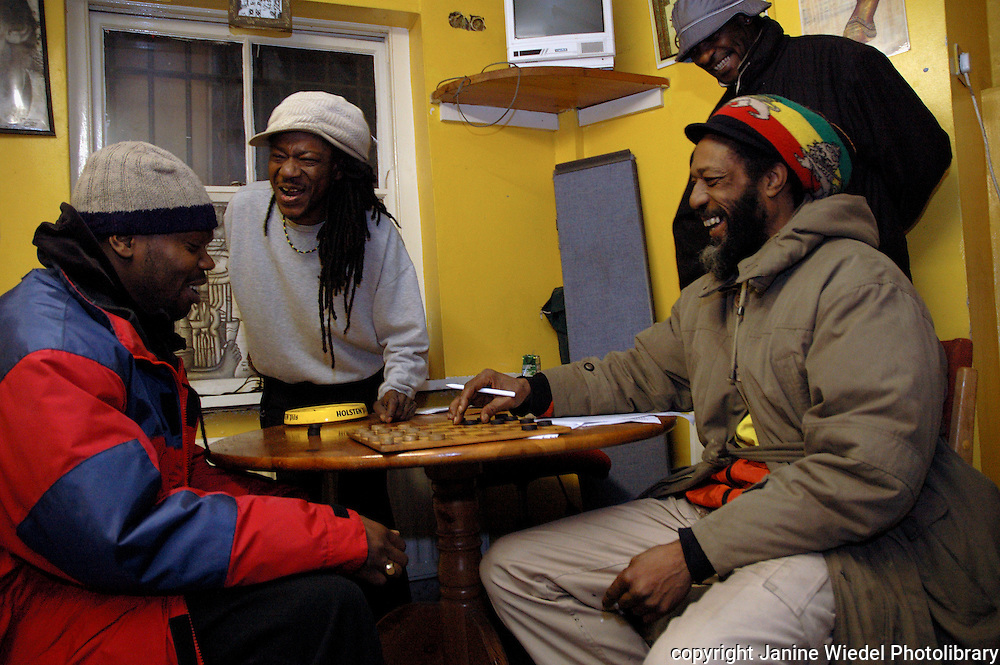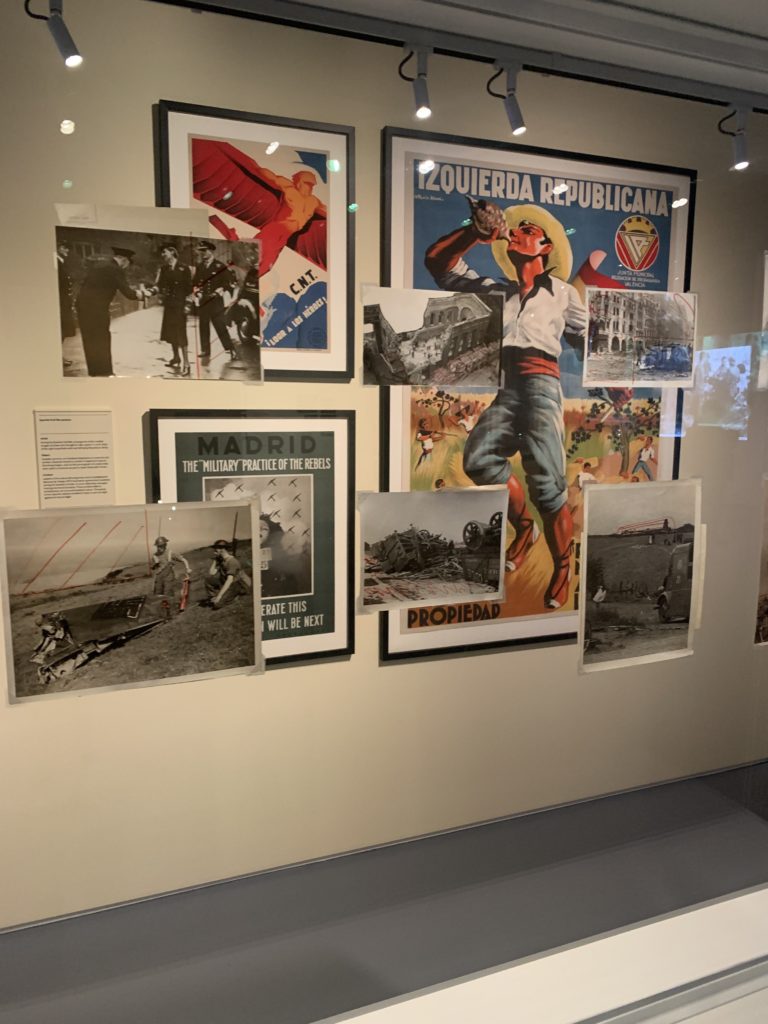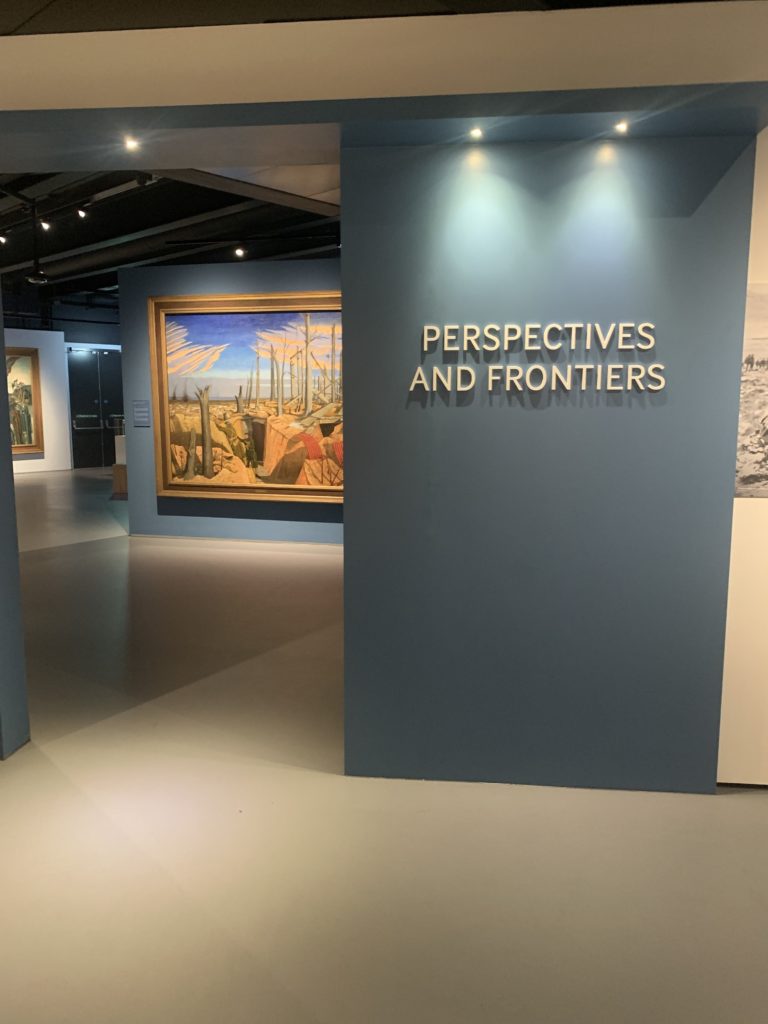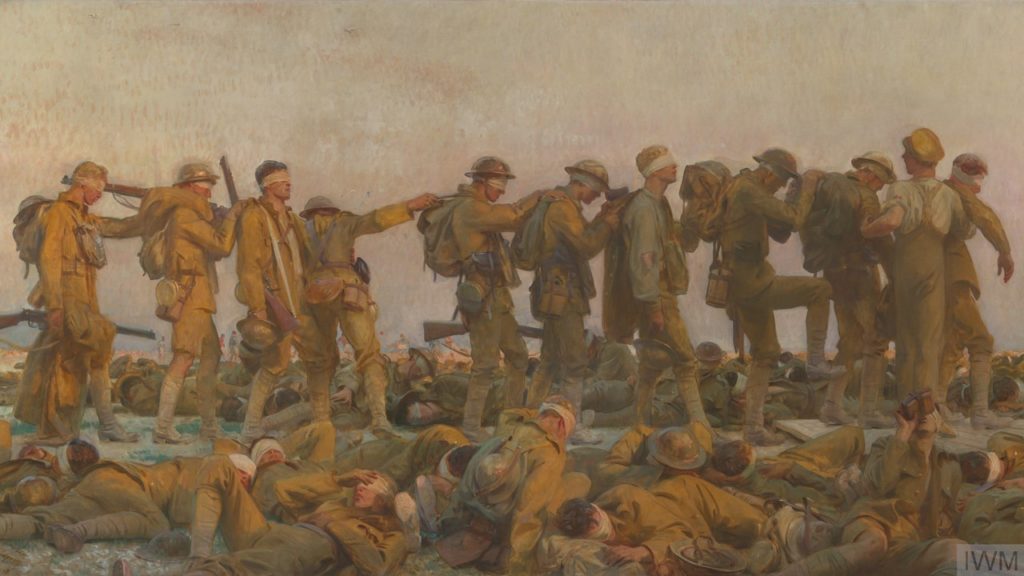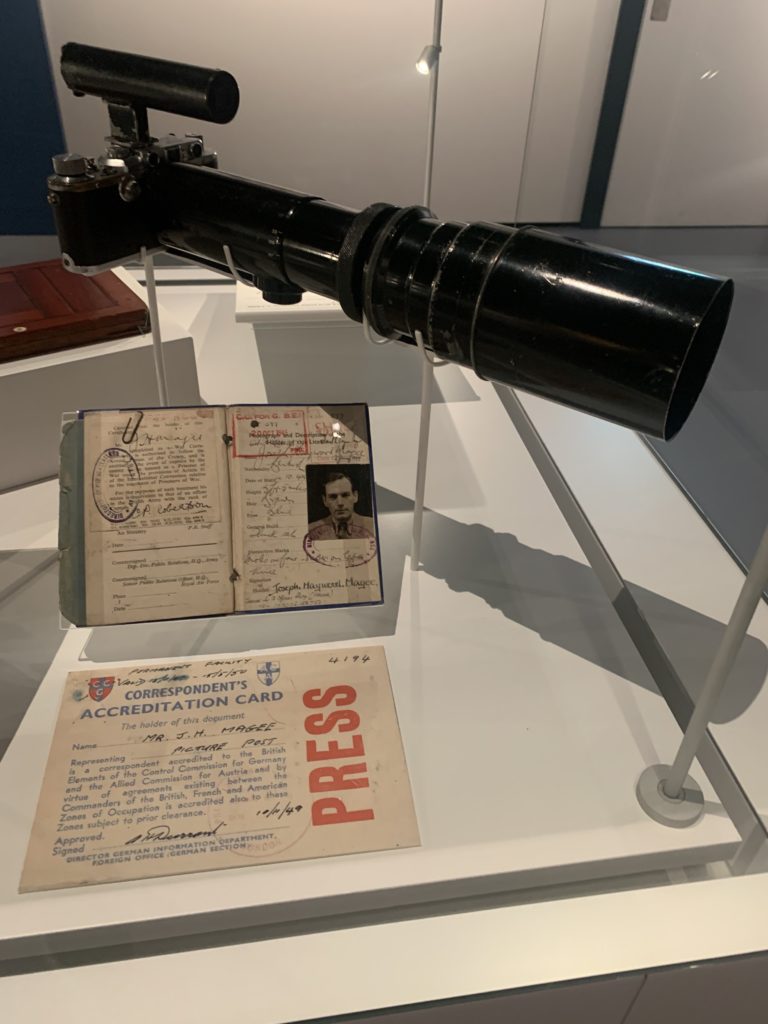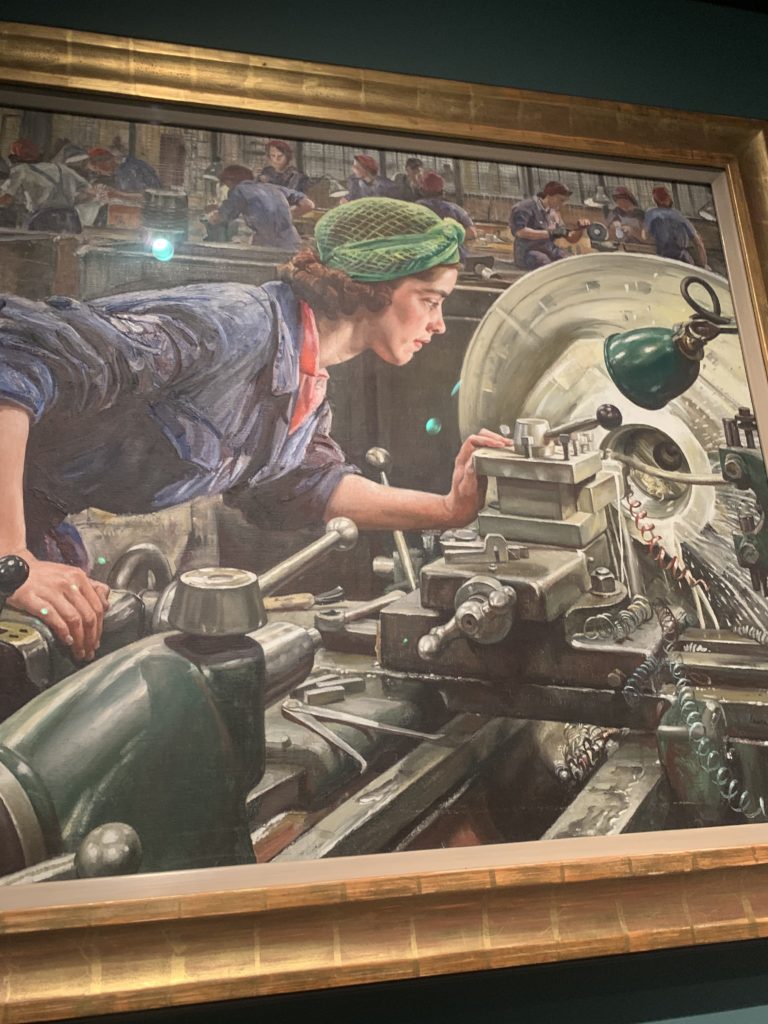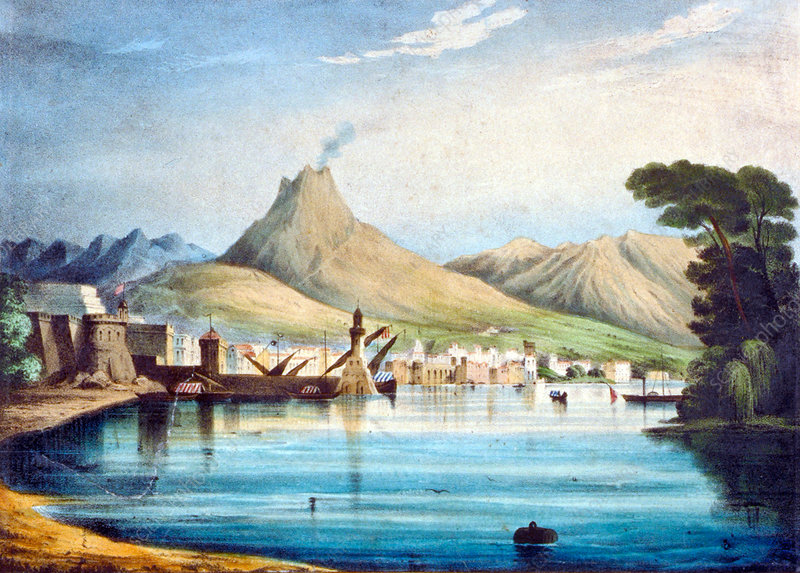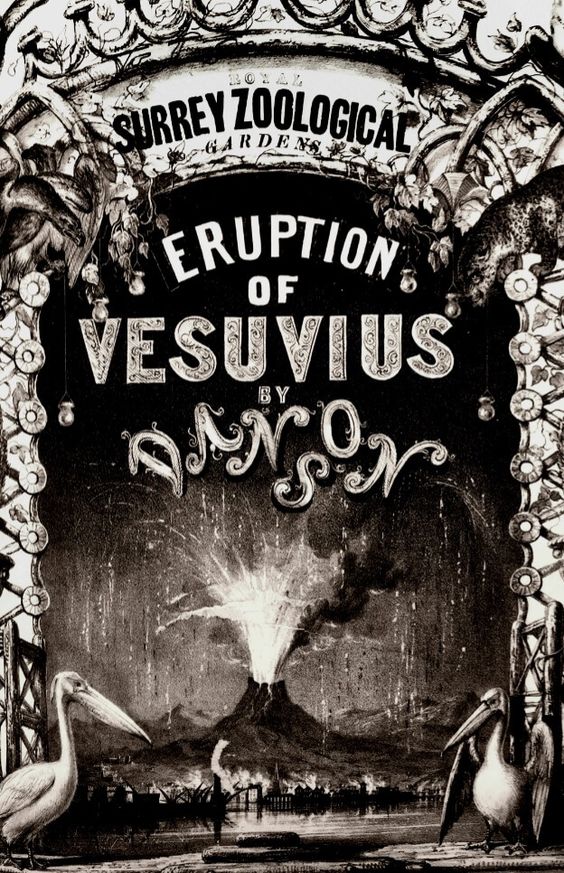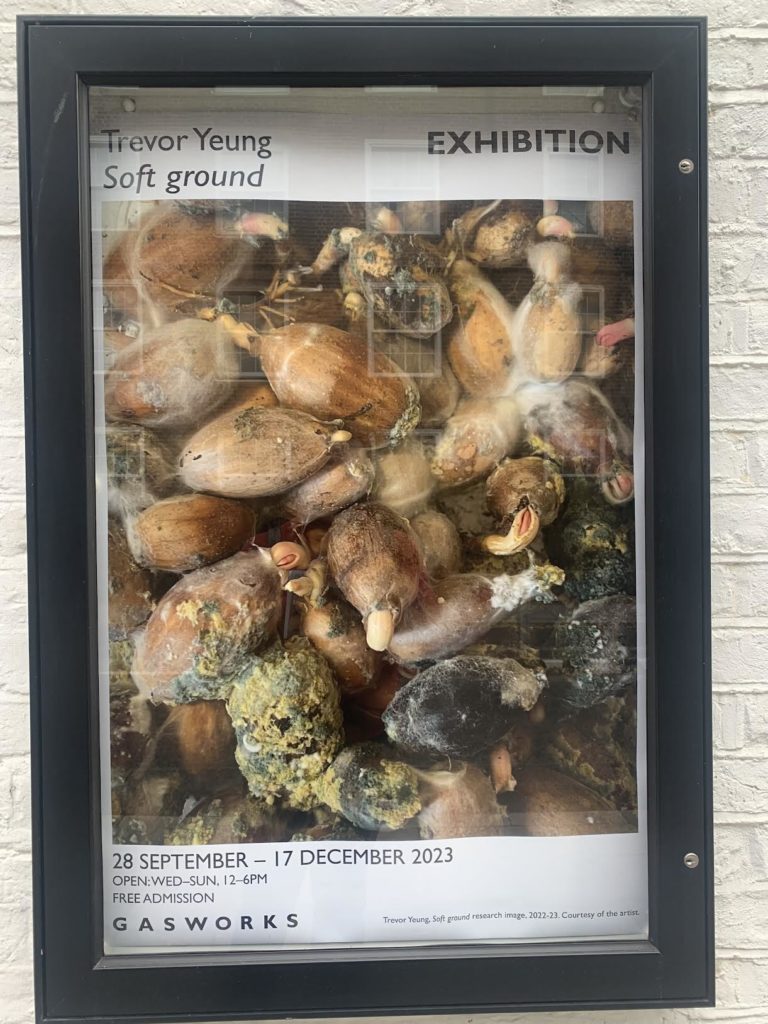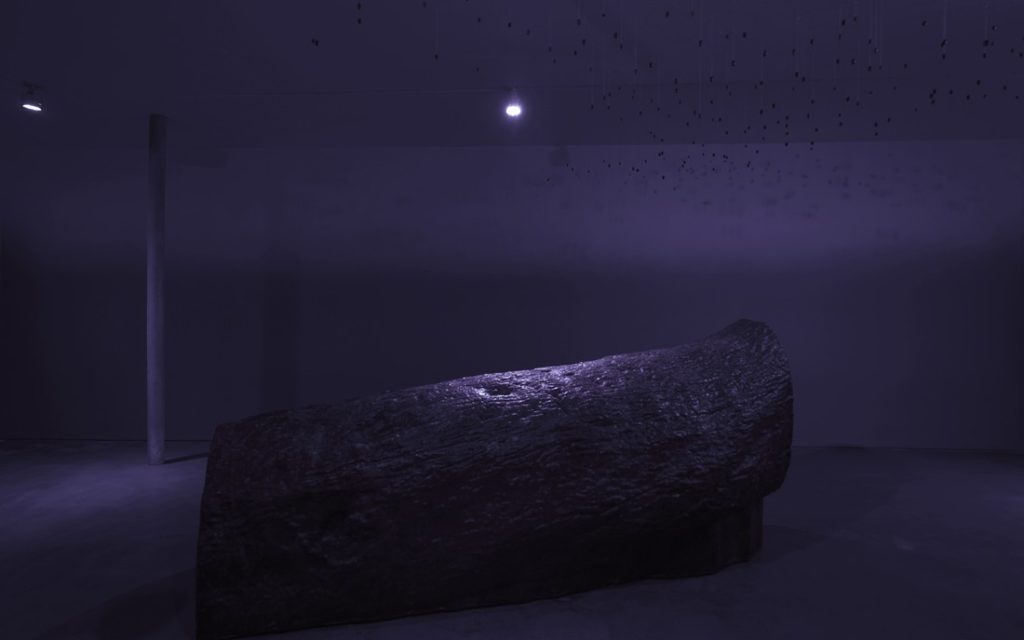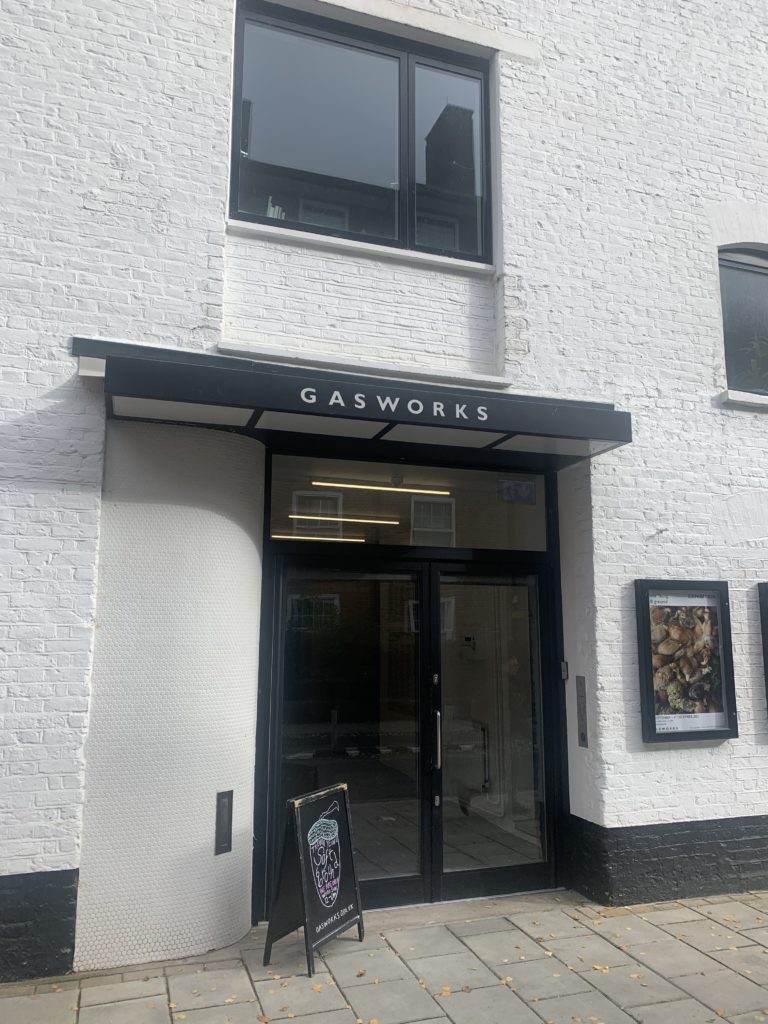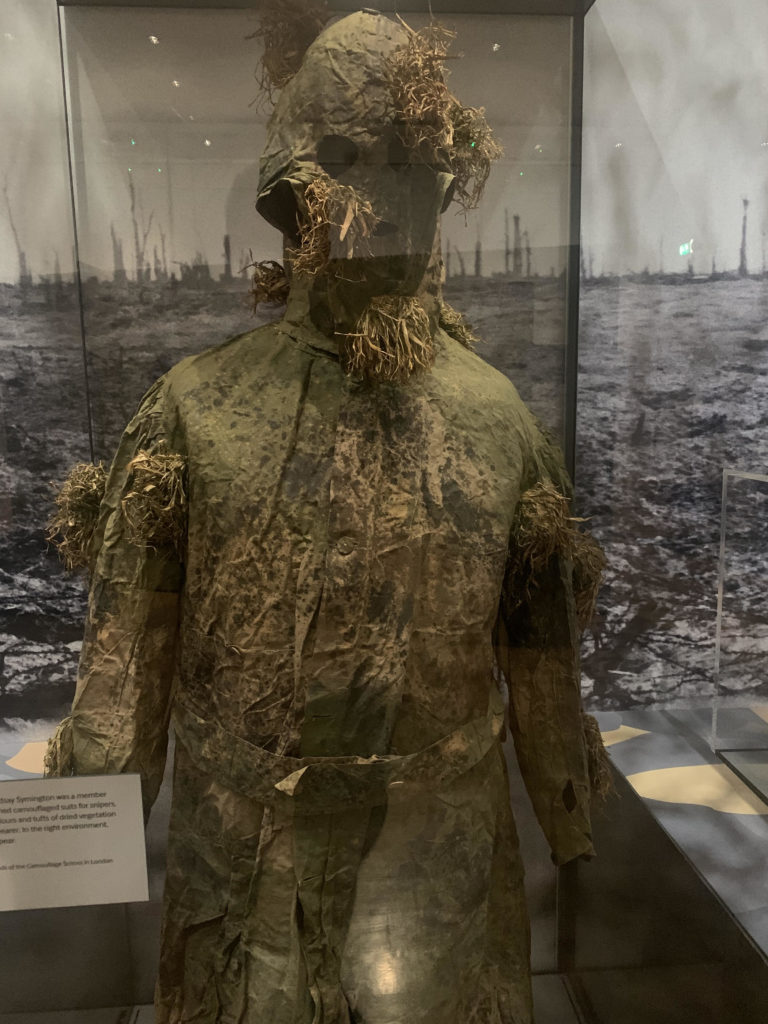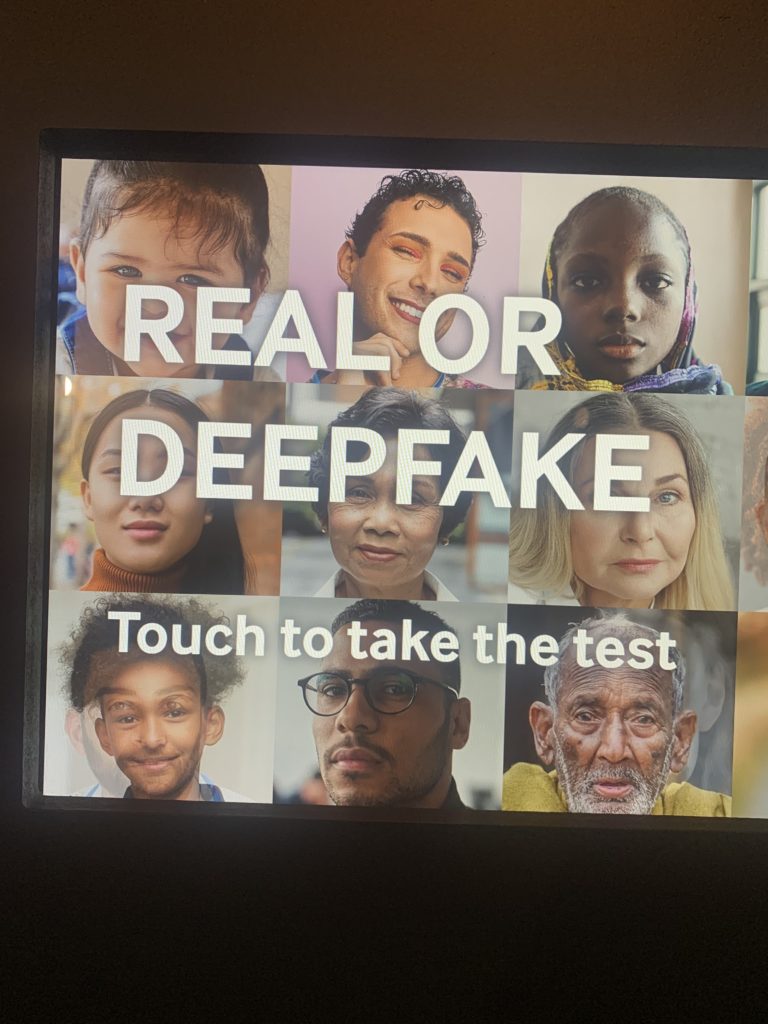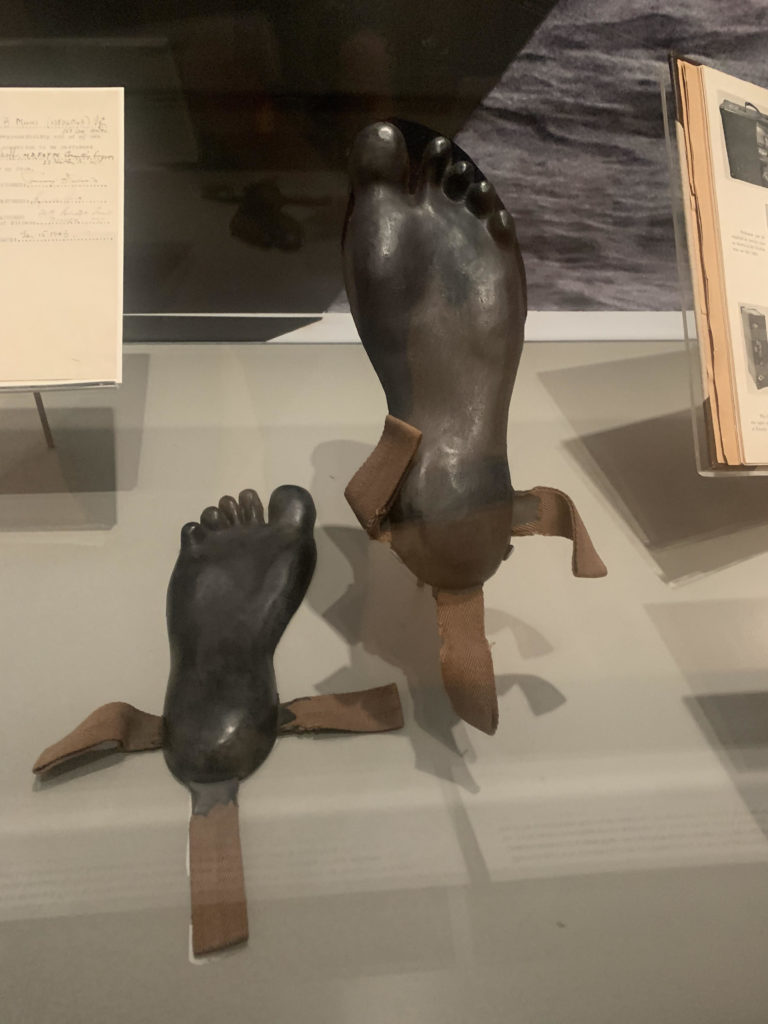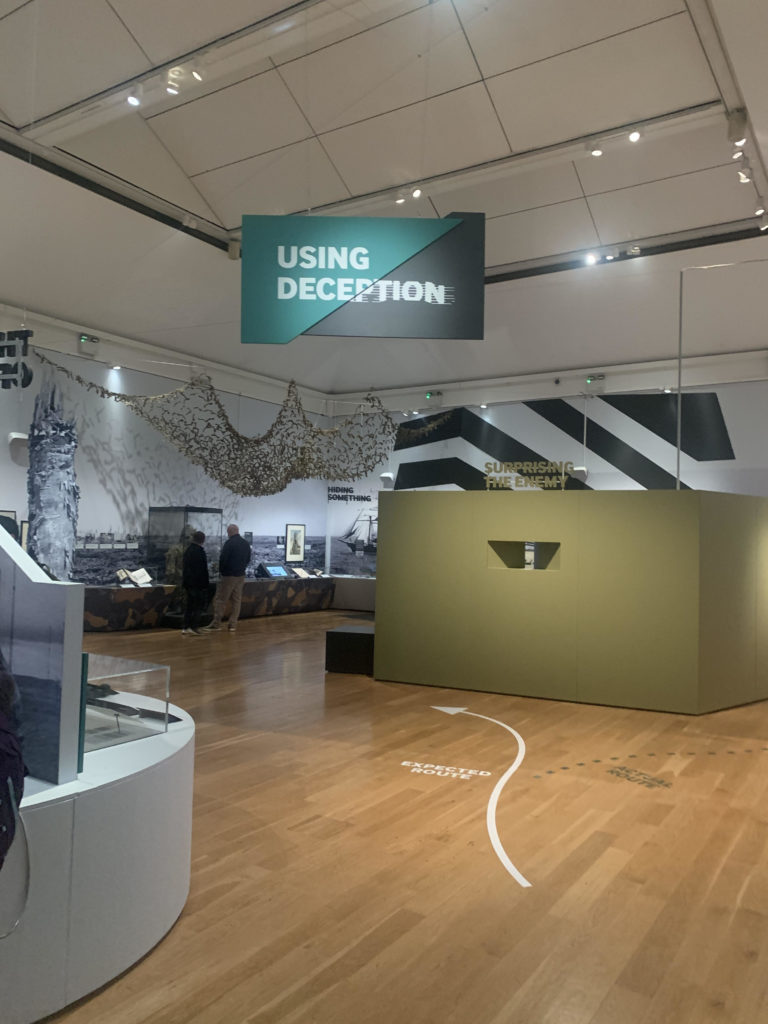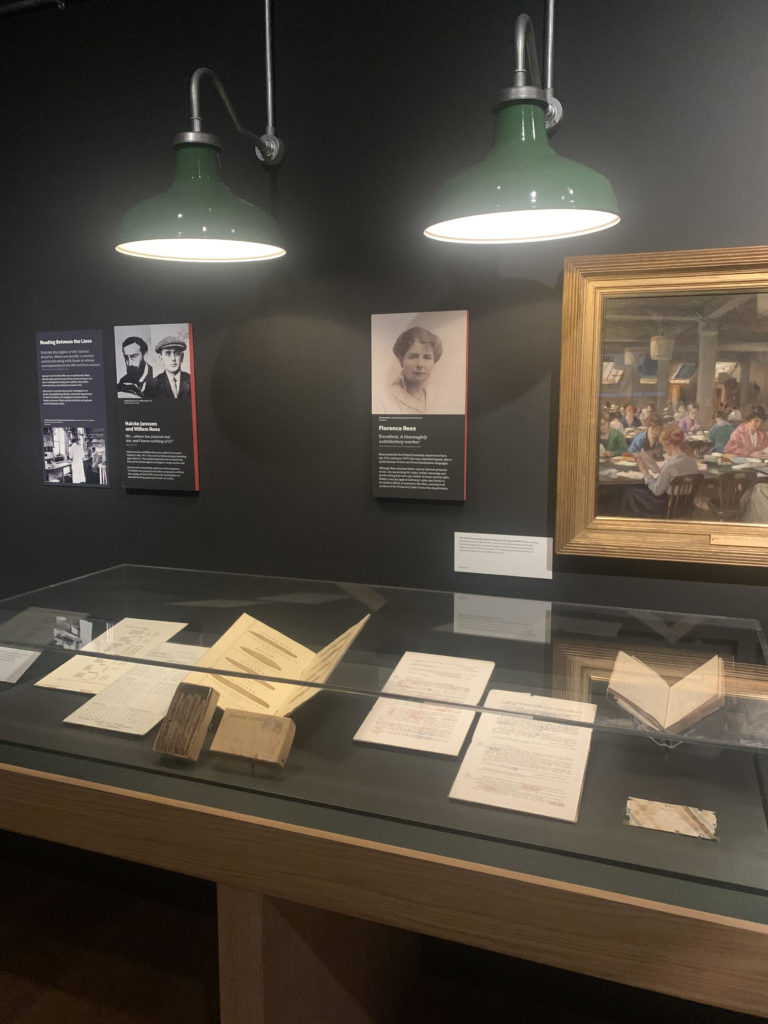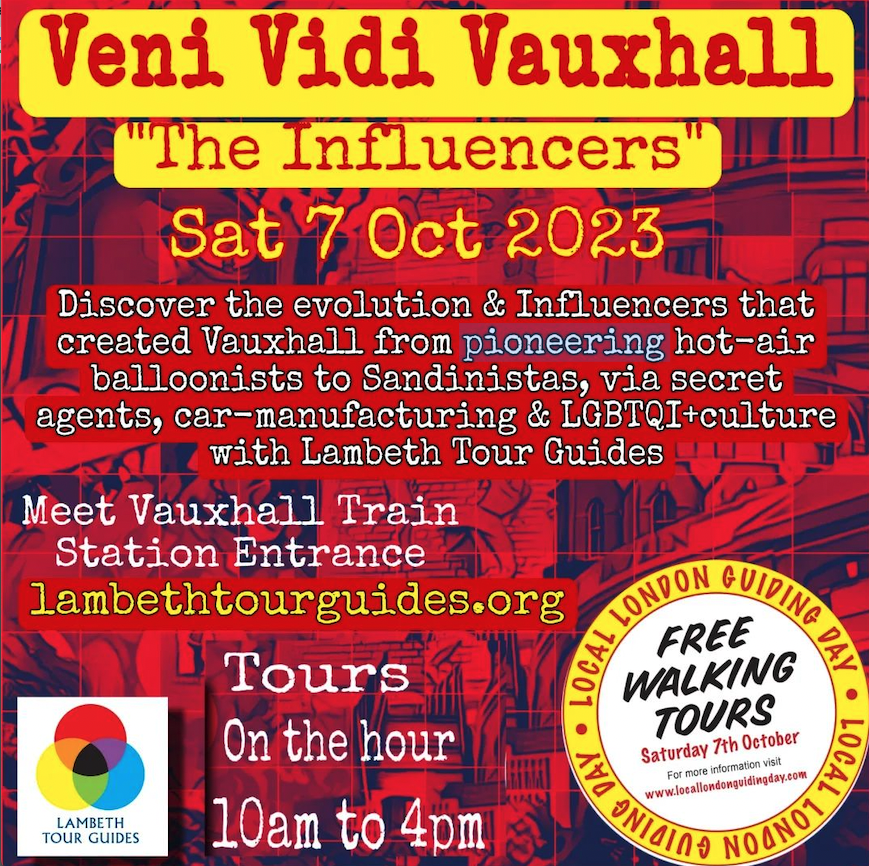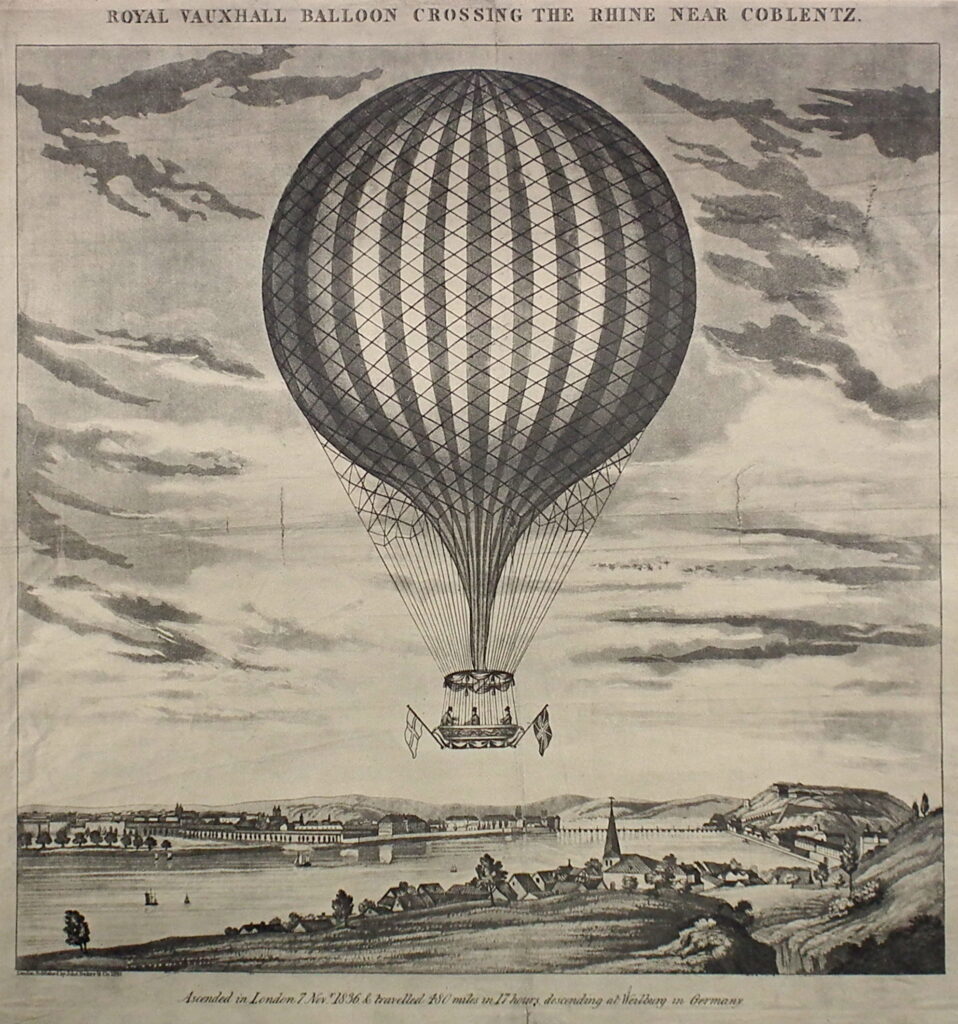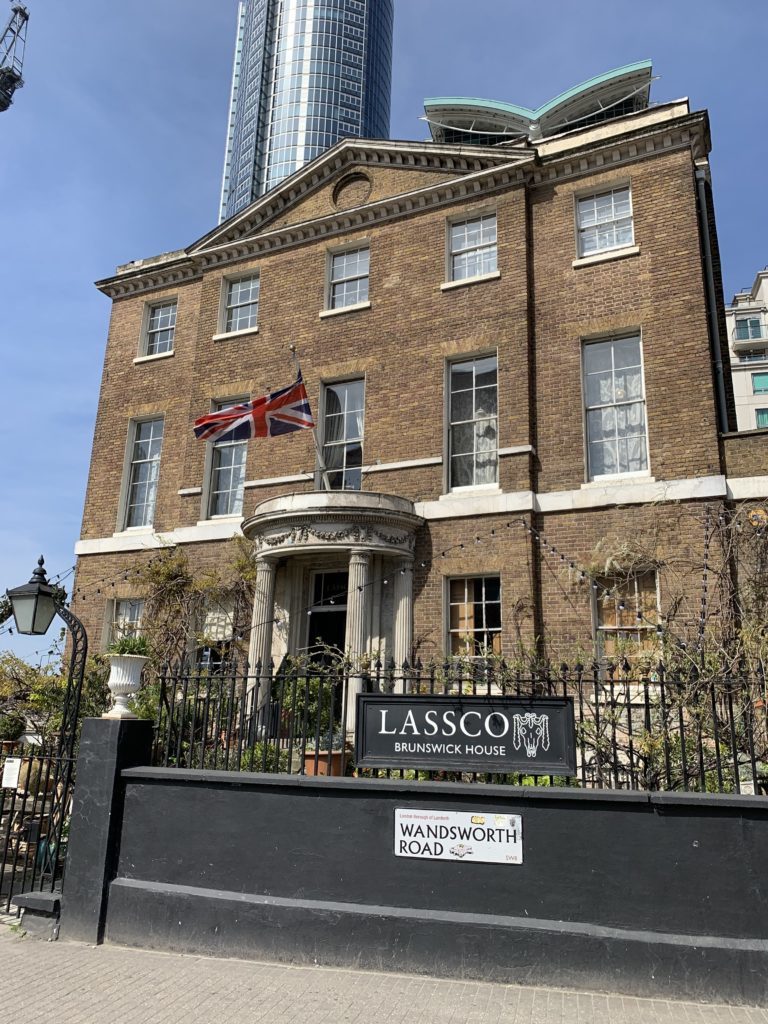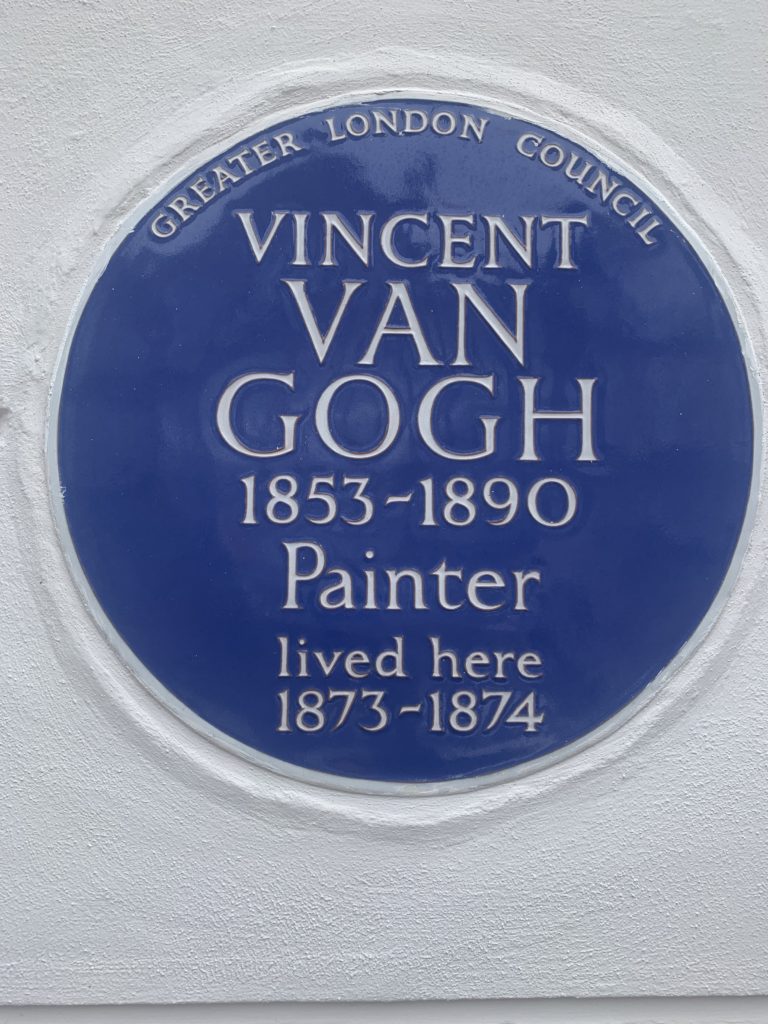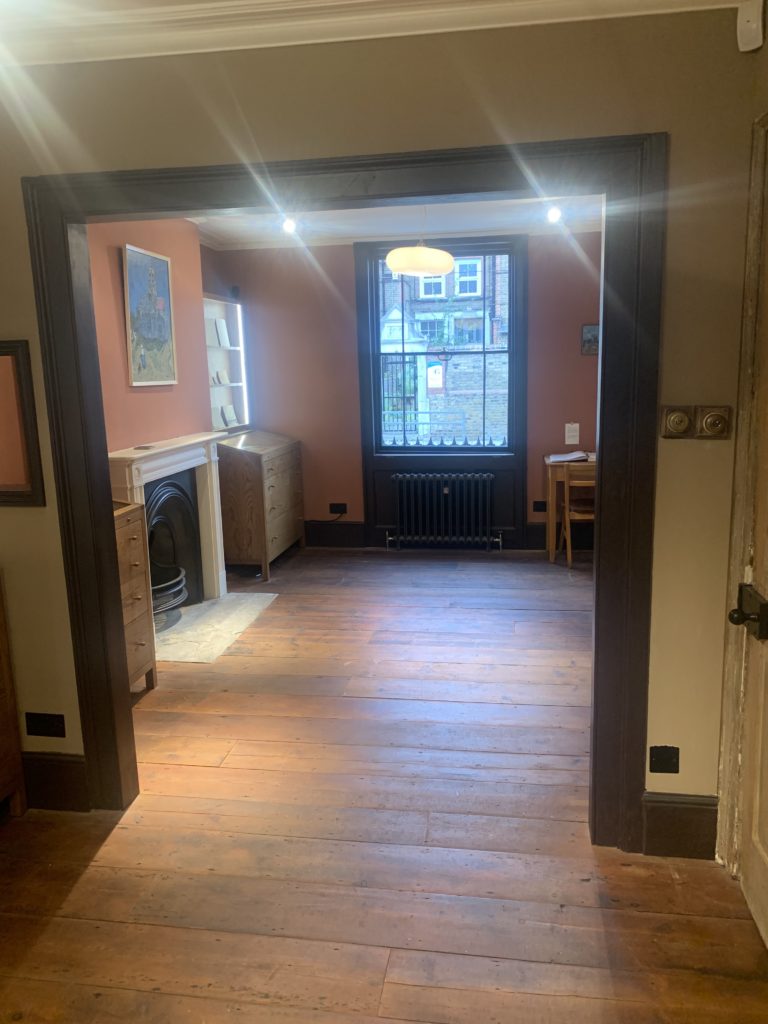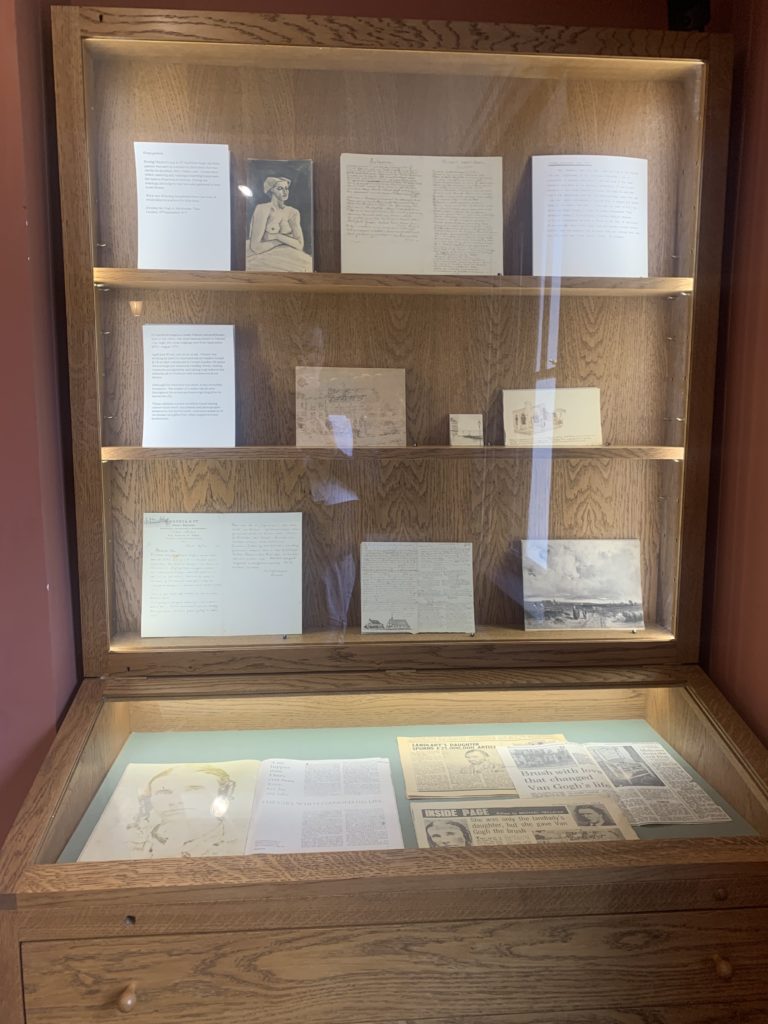Gasworks
Do you like knitwear? Do you like exhibition spaces that are never boring? Then you’re in luck as we just saw the thought provoking show ‘Holes’ at Gasworks Gallery in Oval by UK based Ukrainian artist Anna Perach
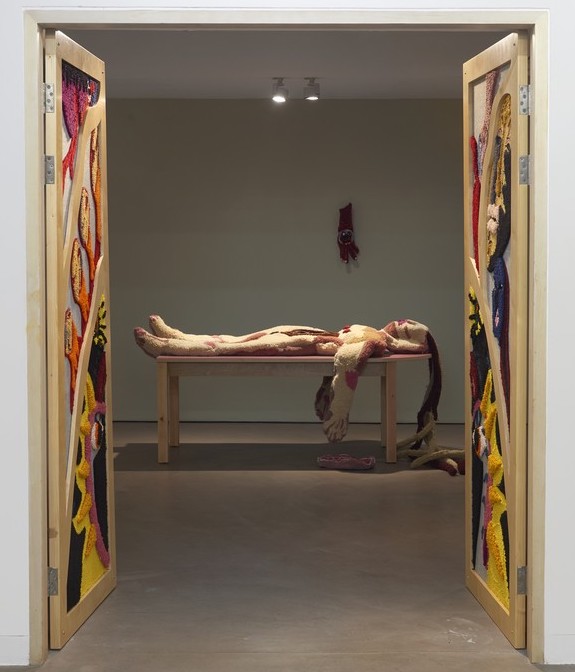
Using the medium of knitted wool, Perach explores how the female body is viewed by a male patriarchy as something that transgresses nature and morality, a good example being 17th century witch trials. This is about control, and Perach most vividly captures this in a richly decorated anatomical Venus sculpture in the middle of the room. Even without interpretation, the textiles are a sight to behold and even the doors are knitted. We suggest handling the doors carefully to avoid being told off, as we were.
At its core, Holes is about women having agency and gaining control of their bodies and presented in a way that transcends flesh. We’re aware that this all sounds like a very heavy buzzkill, but the textiles are really quite beautiful and a pleasing way to build some brain cells. It also smells nice.
Holes is on now until 26 April and is totally free. Gasworks is open Wed – Sun 12 to 6.
Camera Club
We also recently visited the show ‘Hortus Maximus’ at the little known Camera Club off Kennington Cross. The exhibit is about vegetables and was originally created as a site specific installation for the walls of Cinnamon Kitchen in Bishopsgate by the artist Cinnamon Faye. We’re not exactly sure if she was named after the restaurant but we’re looking into it.
In a world of Tesco meal deals and Frankenfoods, this exhibit is a celebration of edible plants and the remarkable shapes they possess. Shot in large format monochrome using natural light, the foods are printed to resemble etchings of fossils or petrified wood. Faye has focussed on chilis and other foods known for their healing properties, with a few bendy gourds that look nice under a camera. The show also features women from around the world presenting themselves to the planet while holding vegetables.
As obscure as the Camera Club is to most of us, it is one of the longest running photographic societies in the world. We know this to be true as we read it online. Hortus Maximus is open now until 23 Feb and is totally free. The Camera club is open daily from 11:00am to 10:00pm and weekends from 10:00am to 6:00pm. And we have no idea why they’re open over 70 hours a week.
